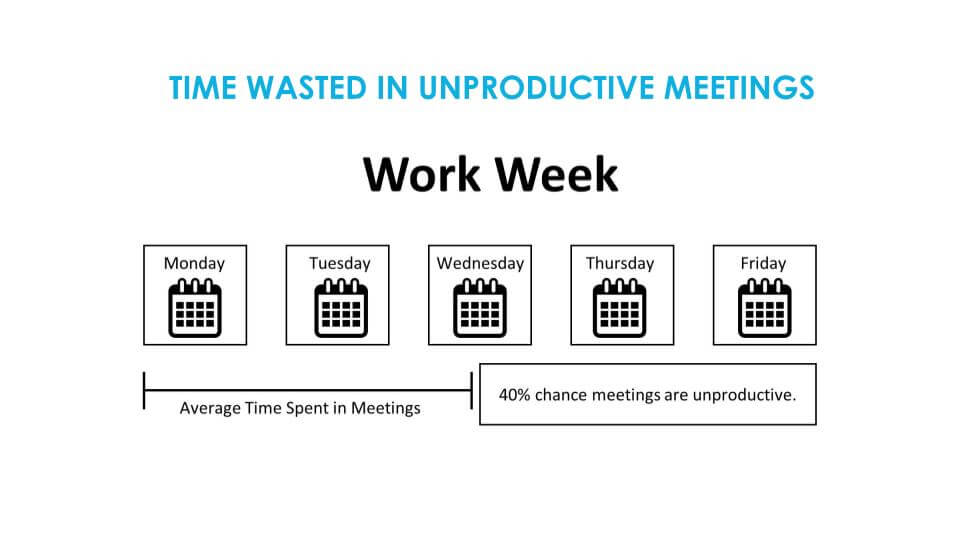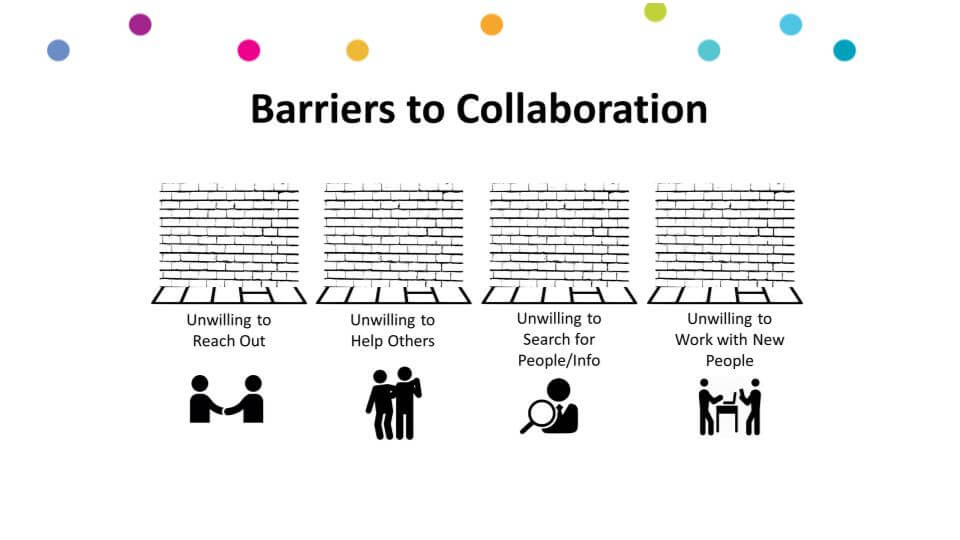Online Meeting Productivity: Collaboration, is there a downside?
Not all collaboration is productive. In today’s business environment, effective communication and collaboration are valued as key drivers of innovation. On average, in a five-day workweek, employees spend between one to two and a half workdays attending meetings. According to a recent study, employees spend almost 31 hours each month in unproductive meetings (HubSpot, 2014). Given these assumptions, most meetings have a 40 percent chance of being unproductive. It’s worth noting that an unproductive meeting doesn’t mean that the meeting was a complete failure. It just means that most meeting attendees could have been doing something more productive with their time.
So, how can you prevent employees from spending hours in unproductive meetings? More than likely, most of these meetings should never have been scheduled in the first place. It’s practical de rigueur for teams to collaborate at every turn. Frequently, individuals realize only after the fact, that they’ve wasted valuable time in unproductive meetings with no agenda, action items, or agreed-upon deliverables. A solid agenda is one key to reducing the number of unproductive meetings employees are involved with.

Disciplined Collaboration is Key
Morten Hanser, the author of Collaboration: How Leaders Avoid the Traps, Build Common Ground, and Reap Big Results, promotes what he calls “disciplined collaboration” and describes four types of barriers to collaboration.
First, Hanser identifies the “not invented here” barrier which describes people who are unwilling to reach out to others. Second, the “hoarding barrier” is where people are simply unwilling to help others. Third, is what’s known as the “searching barrier” in which people are unable to find the experts or information they are searching for. Finally, the “transfer barrier” is where people are unwilling to work with those they don’t know.
According to a recent study, employees spend almost 31 hours each month in unproductive meetings (HubSpot, 2014).
Good managers should do research to determine when the barriers to effective collaboration are too high for the successful completion of a project. When managers suggest that small groups of subject matter experts collaborate, they should consider the three steps of disciplined collaboration Hanser writes about in Collaboration.
The three steps are:
- Evaluate opportunities for collaboration
- Spot barriers to collaboration
- Tailor collaboration solutions
Good managers help their teams identify opportunities for collaboration. Managers need to mentor their teams to help them gain a working knowledge of how to effectively use available collaboration tools to tailor custom collaboration solutions which current employee workflows and whether they can be optimized.
While there are many collaboration suites and tools available today, none come with a custom execution plan that’s tailored to your specific business needs. Hanser rightly points out that “the solution is not to get people to collaborate more, but to get the right people to collaborate on the right projects.” This is a process that requires guidance and management to focus on the progress of a specific group within the company.
Barriers to Collaboration

Most internal collaborations can benefit from management matchmaking. Managers spot opportunities for collaboration, identify barriers and facilitate introductions by using appropriate communication channels, such as Slack, Teams, or other internal platforms. The match-making process works well for large companies with managers who have P&L responsibility and are incented for collaborations that deliver actionable results. Beware, setting up too many collaboration channels can become overwhelming and counterproductive. In an upcoming chapter, you’ll learn how to optimize communications channels and head off potential issues.

Businesses can benefit from collaboration with external partners as well. External business partnerships are an effective tool for business development, but they are generally more difficult to establish than internal collaboration projects. Some business-to-business (B2B) partnerships are beneficial. For example, one business specializes in software and the other specializes in hardware. If both businesses recognize their efforts are complementary, a mutually beneficial partnership can be formed.
Business Collaboration Benefits
When seeking a B2B partnership, it’s important to start by cultivating a personal relationship with a contact inside the prospective business you wish to work with. These contacts are usually found on the business development or marketing teams of the companies with which you wish to partner. LinkedIn and other professional networks are valuable resources for connecting with potential business development and marketing contacts. When you choose potential companies to partner with, research the company’s core values and make sure they align with your firm’s values and mission. Look for ways that you can help one another for a mutually beneficial relationship.
Whenever two businesses decide to partner, it’s important to clearly define roles and responsibilities. During the early stages of negotiations, it’s okay to keep things informal, as you progress, look for opportunities to better define the responsibilities on both sides of the partnership. Then, draw up an agreement that clarifies roles and responsibilities in writing. In today’s quickly changing global business world, external business partnerships and alliances have become one of the most important tools to maintain a competitive edge.
Conclusion
It’s easy to overstate the benefits of collaboration. Managers should only encourage collaboration when there’s a high probability of productive value. Do give teams the freedom to manage the tools and channels that best suit their needs within reason. Managers also need to watch out for the perils of “over-collaboration” where teams underestimate the opportunity costs of collaboration. An opportunity cost is essentially the loss of potential gains that you might have derived from alternative projects. After all, online collaboration is a means to an end, and that end is increased productivity. Promoting disciplined collaboration can help leaders determine whether projects that are heavy on collaboration are effective for their organization. This vision will help leaders identify potential barriers to team collaboration and help them propose solutions to remove those barriers.
[xyz-ihs snippet=”Online-Meetings”]

